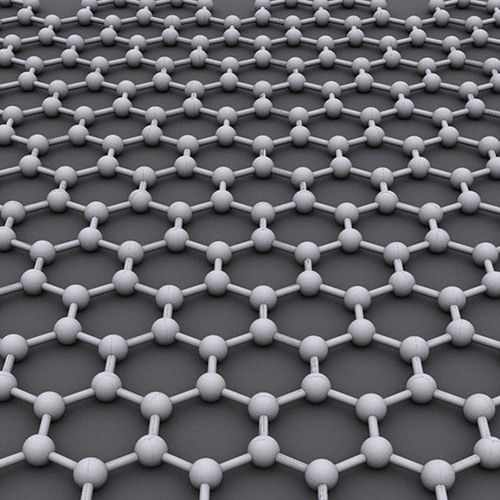Graphene, a two-dimensional crystalline allotrope of carbon, has garnered significant acclaim due to its extraordinary properties, including exceptional strength, electrical conductivity, and thermal conductivity. This burgeoning interest has engendered a parallel exploration into the realm of acoustics, propelling researchers to investigate the feasibility of analogous materials that could potentially replicate graphene’s transformative impact on sound. Hence, the concept of an ‘acoustic analogue to graphene’ has emerged, suggesting the existence of a wonder material within the domain of sound transmission and manipulation that could revolutionize various applications in acoustics and beyond.
The emergence of acoustic analogues is predicated on the fundamental principles of wave propagation. In a manner analogous to how electrons propagate through a graphene lattice, sound waves traverse through elastic media, enabling the examination of their properties through mathematical models derived from condensed matter physics. Notably, the interplay between geometry and wave behavior gives rise to intriguing phenomena, such as Anderson localization and topological edge states, which may be harnessed in the development of acoustic metamaterials.
Acoustic metamaterials are engineered composites specifically designed to control sound waves in ways unattainable by natural materials. Such composites exhibit unique properties, enabling the manipulation of sound parameters such as speed, frequency, and direction. The inspiration drawn from graphene lies in the fabrication of these metamaterials in a lattice structure that can be finely tuned, thereby optimizing their acoustic response. Researchers have succeeded in constructing periodic structures that yield negative refractive index, a hallmark of metamaterials, creating avenues for applications such as superlenses and acoustic cloaking.
One pertinent characteristic of acoustic metamaterials is their ability to exhibit subwavelength resonances. By constructing a medium where the unit cell dimensions are smaller than the wavelength of sound, scientists can achieve effective acoustic responses that transcend conventional limitations. This phenomenon allows for the achievement of sound focusing that rivals the optical capabilities of traditional lenses but operates in the auditory spectrum. Such advancements pave the way for novel sound manipulation techniques, including noise reduction and sound wave steering.
Beyond serving as a tool for sound manipulation, acoustic analogues to graphene can also facilitate the exploration of new materials and phenomena. Investigating how phonons, the quantized modes of vibrations, behave in engineered lattices can provide insights into thermal conductivity and energy transfer. The interplay of phonons and their interactions with other excitations can elucidate mechanisms underlying various physical phenomena, thereby enhancing our understanding of thermoelectric materials and energy conversion processes.
Recent efforts to engineer acoustic analogue materials have yielded impressive results. One noteworthy example is the advancement of acoustic topological insulators, akin to their electronic counterparts. These materials support edge states that are robust against disorder, enabling sound to propagate along the edges while remaining insulated within the bulk. The implications for applications are vast, ranging from secure sound transmission channels to enhanced sensing technologies. The controlled propagation of sound could lead to breakthroughs in both industrial and consumer product markets, enabling more effective communication technologies.
Moreover, the study of these materials extends into the realm of nonlinear acoustics, where the introduction of nonlinearity can give rise to unique phenomena such as shock waves and solitons. Nonlinear acoustic metamaterials could be harnessed for advanced sound modulation techniques, offering the potential for new forms of sound encoding and transmission. Such capabilities could facilitate innovations in ultrasound technology, medical imaging, and sound-based communications.
Challenges persist, however, in the quest for a sound analogue to graphene. Material limitations, fabrication complexities, and performance consistency remain obstacles that researchers must surmount. The heterogeneity of acoustic materials can lead to unpredictable behaviors, necessitating rigorous testing and optimization processes to achieve the desired properties consistently. Ongoing advancements in computational modeling and experimental techniques are integral to overcoming these hurdles and unlocking the full potential of acoustic analogue materials.
As research progresses, a trove of applications leveraging the principles of acoustic analogues to graphene will likely emerge. In particular, the fields of architectural acoustics and environmental noise control stand to benefit greatly. Engineered phononic crystals may provide unprecedented levels of sound isolation or enable the design of auditoriums optimized for acoustic fidelity. Additionally, the increasing demand for effective noise mitigation technologies in urban environments could spur the development of novel sound barriers utilizing these acoustic composites.
In conclusion, the pursuit of an acoustic analogue to graphene opens a new frontier in materials science, one that merges the disciplines of solid-state physics and acoustics. The investigations into the properties and applications of acoustic metamaterials hold immense promise, with the potential to redefine our understanding and manipulation of sound. Through continued innovation and interdisciplinary collaboration, the dream of discovering a ‘wonder material’ for acoustics may soon become a reality, enriching both scientific inquiry and technological advancement.












